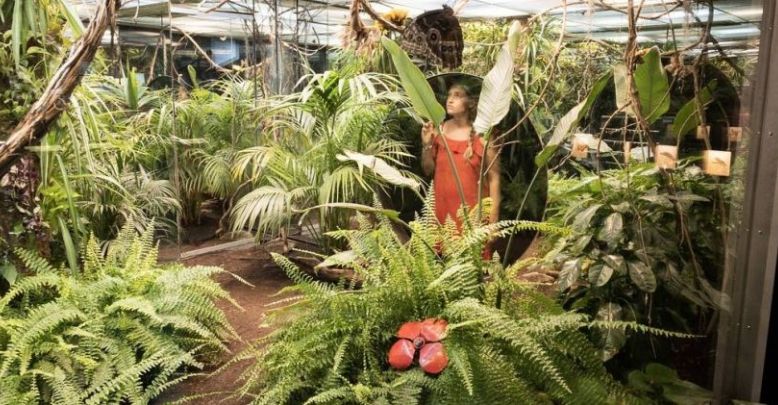- Home page
- Tourism
- Discover
- Visit of Tarn Aveyron
- AVEYRON - Causses, hillside villages and Templars
- Visit of Tarn Aveyron
- Discover
- Tourism
AVEYRON - Causses, hillside villages and Templars
Automatic translation
Map of Aveyron, territory of the Causses, perched villages and Templars
Here we are in the Larzac! This limestone plateau, now known to everyone around the world, first thanks to the Templars, then through the Hospitallers and finally because of the Lutte du Larzac, which reasons like a duel without letting go for strong ideals! Today, come and explore, survey and crisscross, on foot, by bike, on horseback, by canoe or by car, these landscapes and vestiges of the grandiose heritage! Nature does not pretend to be beautiful, on our territory of "Causses, perched villages and Templars". Here, we pass from the abysses under the Viaduct of Millau, to the aridity of the Causses, mixed with typical fauna and flora. The Rougiers de Camarès show off their glowing earth, which, with its blood colour, contrasts with the fluorescent green nature in spring. The villages are all made of stone, the rock outcrops on all sides and underground, we come across the voluble smells of Roquefort and other cheeses... Geology serves gastronomy and sheep's milk, coupled with the perfect humidity of the cellars, give unctuous cheeses, delicious to die for...
Don't wait any longer, don't hesitate any longer! Jump in a means of transport and go on vacation here! Athletes will not be left out either, since you sculpt your body with all the possibilities of nature: caving, white water, climbing, bungee jumping, paragliding, hiking, trail running, cycling... Let's go!
sponsored content
RIVER-SUR-TARN
When one speaks of a rocky PROMONTORY , of an IMPREGNABLE medieval FORTRESS , one imagines rather picturesque things... To use the term of a rocky PROMONTORY, it is not exaggerated, concerning Rivière sur-Tarn and the Chateau de Peyrelade!! Admire yourself! This rocky prow that advances towards the horizon, unfathomable, imperishable...
Construction began in the 11th century, at the top of the Tarn valley. This incongruous, unusual site (for the construction of such a building!), is nevertheless the one chosen to build the castle... It becomes a coveted place... So much so that its dismantling will be required at the end of the 17th century.
Today you can relive the history of this incredible construction, from June to September it welcomes visitors on a free or guided tour. But the castle is not the only wonder of Rivière-sur-Tarn, there is also the wine of the Côtes de Millau and the orchards, in these arable lands on the banks of the Tarn, watered by the sun. Wine enthusiasts will be thrilled with a visit to the unique cellars of Entre Deux-Monts, half-buried buildings (semi-troglodyte), with characteristic Lauze roofing. A site to visit all year round, carefully renovated by an association for the protection of local heritage. Guided tour and tasting on the program...
In these cellars, would it also be the cheese that matures, in addition to the wine? Bleu des Causses is a full- fat cow's milk cheese with marbles, smooth and melting, matured in the natural cellars of this region where the fleurines (natural aeration allowing the cheese to breathe) give all their flavor to this soft and flowery paste!
In Rivière-sur-Tarn, there is enough to spend a good holiday, between gastronomy and heritage, isn't it?
River on Tarn
MILLAU
Millau is a town in Aveyron, famous for its majestic and breathtaking viaduct. So let's start by talking about it, before telling you about the other riches of the second city of the department.
The Millau Viaduct is a cable-stayed bridge, its primary function is to span the Tarn valley to join the Causse Rouge and the Causse du Larzac. It is an architectural feat 2460m long! Cars use it via the A75 motorway. This pharaonic project was carried out to avoid traffic jams on the outskirts of Millau, a very busy and congested holiday route. In addition to its road function, the Millau Viaduct, which is a truly extraordinary and amazing (really...) project, is an undeniable tourist attraction in the region. Consequently, everything is laid out to admire it from all sides, understand it and appreciate it from the first stone to the passage of the first cars.
To learn more about the Viaduc de Millau, we invite you to go through the Aire du Viaduc de Millau, to see the Viaduc Expo. You will enjoy a magnificent view of the bridge, its stays, its deck, its 7 piers, including P2, the highest pier in the world! There is an exhibition space with explanatory panels, all organized by Eiffage, the construction group that built the viaduct. To have another magnificent view integrated into the Aveyron landscape, go to the village of Peyre, located along the Tarn.
The famous Millau Viaduct
Back to Millau! Ancient city, born from the attraction of the Tarn and its confluence, Millau is famous for its craftsmen who work the sigillata clay (which the Roman Empire was fond of...). It is a technique of pottery, earthenware and ceramics, which consists in applying a layer of clay with extremely fine particles, on the surface of the modeled object, to give it important properties of hardness, sealing and robustness. In Millau, it is on the Gallo-Roman archaeological site of Graufesenque, that you will learn more about this subject.
It was in the 9th century that Millau changed sides (strictly speaking!) and settled on the other bank of the Tarn, to transform itself into a commercial city. Over the centuries, Millau took off thanks to the know-how of the inhabitants in the manufacture of gloves, sheets, leather work and skins in general.
In the 19th century, it was the period of urban development, with the territorial development of the city, still specializing in tanning (leather gloves). Today, as in many towns in the region and after social crises and industrial decline, the glove industry is in the minority. It is gradually being taken over by tourism, as a heritage element to be valued.
Today, Millau is a great city for holidays, with nearly 23,000 inhabitants, many natural and cultural sites and activities all year round. The climate is pleasant, it is well located and served by transport.
Pleasant city, Millau is close to nature
Millau is a nature destination, here the surrounding landscape consists of natural lawns, on limestone soil. The gorges and ravines are part of a whole sensitive ecosystem, integrated into the Grands Causses regional natural park. On one side the Tarn gorges, on the other the Lévézou plateau and the Dourbie gorges. Sports, nature and adventure lovers will be really happy in Millau which is a mecca for nature sports! Here we do mountain biking, trail running, white water and nautical sports, canyoning, climbing, via ferrata, paragliding, elastic, parachute jumping... We build muscle, we get some fresh air, we are having fun !!
Visit in Millau:
The Notre-Dame de l'Espinasse church (12th century) and that of the Sacré-Coeur, the Belfry of Millau, its square tower and its beautiful 360-degree view, at the very top of the 210 steps. Go through the Pont Vieux over the Tarn (not as big as the Viaduct ;) ). Take advantage of the beautiful residences: the Sambucy de Sorgues hotel, the Sambucy de Miers hotel, the Pégayrolles hotel. Walk towards the Place du Maréchal-Foch and its arcades, the Halle. The Museum of Millau and the Grands Causses will retrace the history of the town and its craftsmanship.
Not far from Millau is Montpellier-le-Vieux and its well-known chaos. A chaos is a pile of rocks, resulting from the natural phenomenon of erosion or meteorological events, which give rise to astonishing, rather surreal and strange landscapes... In Montpellier-le-Vieux, it is 120 ha of nature leisure park laid out in the largest rocky labyrinth in Europe, which will offer you pleasant walks. Aficionados of Louis de Funès will recognize some landscapes of La Grande Vadrouille... There is also a small tourist train, a via ferrata and other activities on site.
Montpelier-le-Vieux has also been a stage town for the Tour de France cyclist for several years.
The tips and good plans of the Guide Tarn Aveyron in Millau:
Do you like thrills? Make a baptism of free flight in Millau! Or just watch the others jump from the Pouncho d'Agast, a magnificent view of the city, towards Montpellier-le-Vieux.
- There are 2 Via Ferrata in Millau: the Boffi site, near the Dourbie gorges offers landscapes... wow... The Liaucous site is at the entrance to the Tarn gorges. Each of the two sites offers 2 levels of difficulty, for everyone.
- In Millau, you are a few kilometers from the Causses du Larzac, a high limestone plateau with lunar and arid landscapes.
- Are you interested in the glove industry in Millau? Visit the Atelier du Gantier, a glove factory, the oldest in the city, which will show you its manufacturing workshop and its products. There are also other factories that offer tours.
- In the region, the king fruit is the cherry! The Cherry House will offer you walks in the orchards and interesting explanations on the cultivation of the small, juicy sweet red fruit...
- In Nant, take a walk along the Canal des Vernèdes, it is thanks to the construction of these canals that the city was drained and cleaned up. They concentrate the Durzon and allow the irrigation of the fields.
- Nant is a village where many craftsmen have set up their workshops: jewellery, gallery, bookbinding workshop, cardboard creations, cushions with aromatic plants, ceramics, basketwork, painting... It's super cool!
- Hiking lovers will be served and the strongest will climb the Roc Nantais!
Millau craftsmen specialize in leather gloves
sponsored content
NANT
Between the Dourbie river and the Durzon river, lies Nant, a small green village of 950 souls that smells of calm and nature.
You can feel the Mediterranean influences in this village located 15 kilometers from the Gard department and leaning on the Cévennes. We are also one foot in the Larzac and its karstic plateau.
It was the monks who created the initial town of Nant in the 10th century. They drained the Durzon valley to develop agriculture there, built a monastery and built the town with the increase in population and trade. Here agriculture is still an important resource (the village is called, "the gardens of Aveyron" ), in particular the breeding of sheep, which provide the milk for the typical cheeses of the region: Roquefort, Tome and Perail.
In Nant, you will discover:
The Saint-Pierre abbey and its beautiful stained glass windows, the Chapel of Saint-Martin-du-Vican (and several other small chapels), the Prade bridge. The Halle de la ville is pretty, and several beautiful properties can be seen in the town.
Near Nant, on the municipal territory, is Cantobre, a medieval village in the Dourbie valley. Perched on a rocky outcrop, at an altitude of 550m in the middle of the vegetation and far from any urban structure, it is a real journey back in time... Here, no breeze blocks, old stones everywhere, a magnificent view, small steep streets, squares where to stop for a picnic... It is a place conducive to climbing and rest!
The tips and good plans of the Guide Tarn Aveyron in Nant:
- In Saint-Affrique, discover a very beautiful dolmen, that of Tiergues.
- There is also an impressive rock structure: Le Rocher de Caylus, which rises 200 meters above the town. From up there, a magnificent view awaits you.
- A greenway is present in Saint-Affrique, to go to Vabres l'Abbaye, along the Sorgues.
- An intercommunal swimming pool awaits you for the summer heat!
- To learn more about animal husbandry, an institution in the region, go to the Pastoralia museum.
THE CAVALRY
Beautiful stone houses, sunny and full of character... In the middle of the Larzac plateau, is La Cavalerie, a well-located and well-served village about twenty kilometers from Millau. It is an ideal holiday location to immerse yourself in the heart of the tumultuous history of the Templars and the Hospitallers in Aveyron, as well as the Larzac struggle. The settlement of La Cavalerie goes back to ancient times, as evidenced by the many dolmens and vestiges of the beginnings of a very old village a few kilometers from the current location.
Larzac is a land of the Templars, who created the town in 1154. The buildings they erected are the Commandery of the Cavalry, which consisted of a church, a cemetery, a tower and agricultural buildings, next to the house. There was also a castle, now gone and difficult to locate. Around 1312, after the fall of the Templars, the town was entrusted to the Hospitallers (a religious order) who fortified the town and developed it in the 15th century. The wars of religion at the end of the 16th century damaged the established prosperity and the dismantling of the towers as well as the demolition of the castle of the Templars took place. In the 17th century, La Cavalerie regained its notoriety and commercial vocation, several buildings were rebuilt. In the 18th century, the traffic routes were improved. In the 19th century, it was agriculture that sustained the town, which suffered from the rural exodus, like other towns in this region. At the beginning of the 20th century, the installation of a military camp restarted economic activity. This will then be transformed into a reception area for those repatriated from the Algerian war.
In the 1970s, La Cavalerie was at the heart of the Lutte du Larzac led by peasants and various unions for more than 10 years. For several years, La Cavalerie has benefited from two resources for the revitalization of the village: tourism, which is structured and allows, thanks to alternative accommodation, catering and the enhancement of heritage, to attract crowds. The military barracks is also a source of repopulation, since it is now host to many families of the French foreign legion.
On a walk to the Cavalry, you will discover: The fortifications, the very well preserved round towers, the walkway which is traversed and offers a majestic view of the surrounding landscape and the square tower. All this beautifully lit at nightfall.
The whole is listed as a historical monument. The Notre-Dame de l'Assomption church, near the Place des Templiers with its magnificent stone houses. The astonishing and sumptuous Robert Muret space.
Around the village, there are old sheepfolds and circular stone washhouses, witnesses of the agricultural vocation, on this land of Larzac. There are of course mysterious dolmens and menhirs , as in the whole region. There are many artisans, in season, at La Cavalerie. You will notably discover producers of the famous Roquefort.
The proximity to Millau will allow you to appreciate, for a day, the abundance of sporting and cultural activities in this city.
The Cavalry
L'HOSPITALET-DU-LARZAC
A pretty village founded in 1108, quite typical of Larzac and intimately linked to La Cavalerie, with which it formed a unit a few centuries ago. It is a perfect starting point for a quiet holiday with lots of great activities within a 30-minute radius.
You will visit a free museum there, the archaeological center of Larzac, where lovers of history and flora will find a lot of pleasure! This will be followed by a short walk on the particularly wide old Roman road, which crossed the Larzac 2000 years ago for the distribution of salt, oil and other artisanal products such as ceramics. The pretty Caussenarde houses are arranged around a fountain which is at the origin of the nickname "Oasis du Larzac" , for Hospitalet (not easy to retain water on the limestone plateau of Larzac, the fountains are rare).
In summer, take advantage of the municipal swimming pool, rent a bike to explore the Larzac, take a ride in a microlight, play railwayman on the Vélorail of Sainte-Eulalie-de-Cernon, tackle the Cornus adventure course.
Not far from there, in Sauclière, is the Museum of Traditions. For fishing and swimming, there are ponds nearby: in Sainte-Eulalie and Sorgue.
The small village of Hospitalet-du-Larzac
ROQUEFORT-SUR-SOULZON
It's all in the name! This town near the Soulzon stream owes its fame to the eponymous cheese. It's the geology that is responsible (and we're not going to blame it) for the marbled, sweet and strong creaminess of Roquefort cheese. Indeed, the town is established on a limestone plateau, like a good part of the Larzac, but at this place, it has partially collapsed, giving rise to "fleurines" , kinds of cracks or rather large faults, which ensure a Homogeneous and perfect ventilation of the cellars where the precious cheese is matured...
It was Charles VII who granted Roquefort the exclusive right to ripen the cheese of the same name in the 15th century. Here, we defend this appellation and be careful not to confuse Roquefort with other blue cheeses of the same type! In the region, cheese is an important economic and tourist resource. It all starts with breeding, so there are many sheep grazing in the meadows, because they are the ones who give the milk used to make Roquefort and also Pérail (another sheep's milk cheese), see our gastronomy section.
In Roquefort, don't miss a visit to the maturing cellars, fitted out in natural stone. Roquefort stays there for a minimum of 3 months to earn its AOP. In the nearby village of Soulzon there is also a gigantic menhir 3m high, as well as 2 churches. Pass by the orientation table of the Rocher de Saint-Pierre.
The large village of Roquefort-sur-Soulzon
The Roquefort cellars (Company)
SAINT-AFFRIque
Here is one of the largest municipalities in France! Located in part of the Grands Causses Regional Natural Park, Saint-Affrique is made up of numerous hamlets and villages, which form the natural region of Saint-Affrique (the two main towns are Saint-Affrique and Camarès). The name of the town comes from the bishop of Comminges Affricanus, who took refuge in the town in the 5th century and then gave it his name.
Saint-Affrique is a commercial and dynamic city, it is illustrated by the development of the textile industry, then agriculture and livestock, with the proximity of Roquefort. Today, touristically speaking, it is a pleasant place to discover, loaded with a strong and intrepid history! Several churches and religious buildings are scattered over this vast town, including the former Cordeliers convent, the parish church and its particularly high spire , the church of Bournac... Observe above the houses, the niches with votive statues of the Virgin, it is an offering of thanks from the inhabitants, spared by cholera, at the end of the 19th century.
Saint-Affrique has 5 bridges, including 1 medieval, the Pont Vieux.
Visit the Maison de la Mémoire du Pays Saint-Affrique to learn more about the rich history of this region. It's free and open all year round.
The tips and good plans of the Guide Tarn Aveyron in Saint-Affrique:
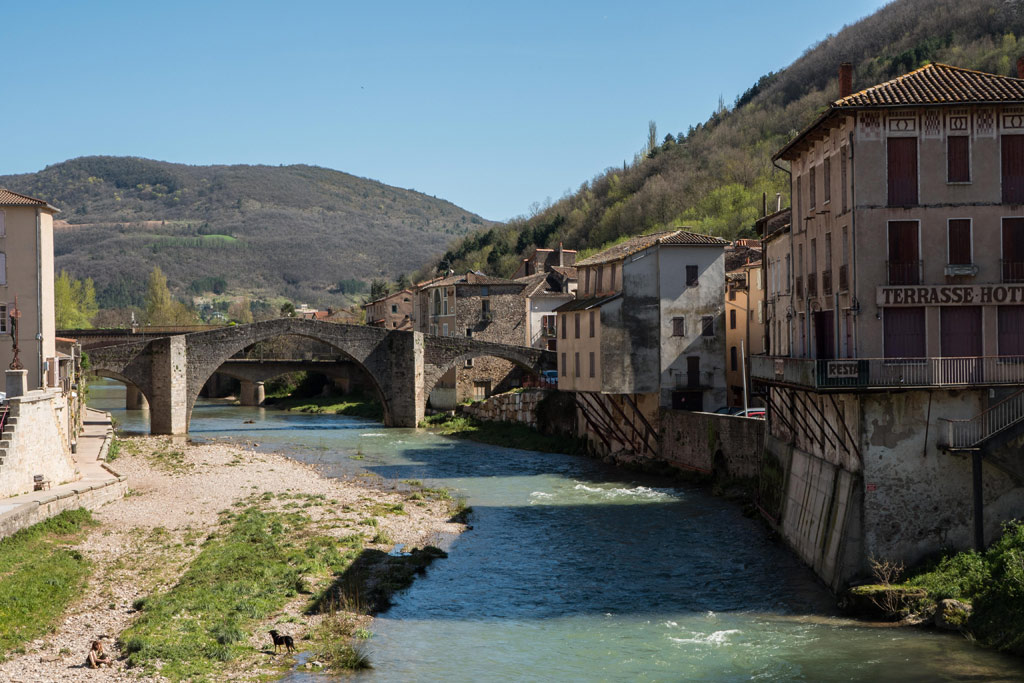
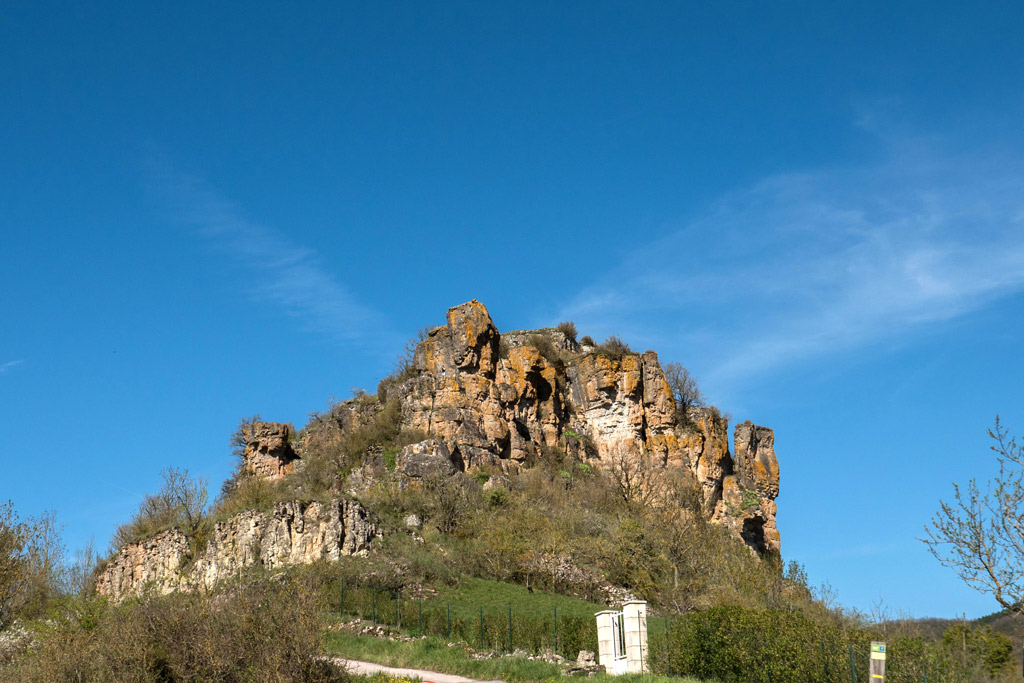
sponsored content
CAMARES
Are we in colorado? No, no, still in Aveyron, but near Camarès and its rougiers. It is a kind of soil, which has the particularity of being really blood red, due to the iron oxide that composes it. A small quiet village that lives off this geological curiosity and raising sheep for Roquefort, Camarès is pretty to visit, with its surreal landscapes and benevolent houses. The village offers a calm and relaxing environment, we will soak our feet with pleasure in the Dourdou which flows at the foot of the city. To have a perfect view of this glowing landscape, head from Camarès to the imposing and refined Château de Montaigut, which can be visited in a very fun way (in medieval costume if you wish!) and offers treasure hunts and other activities.
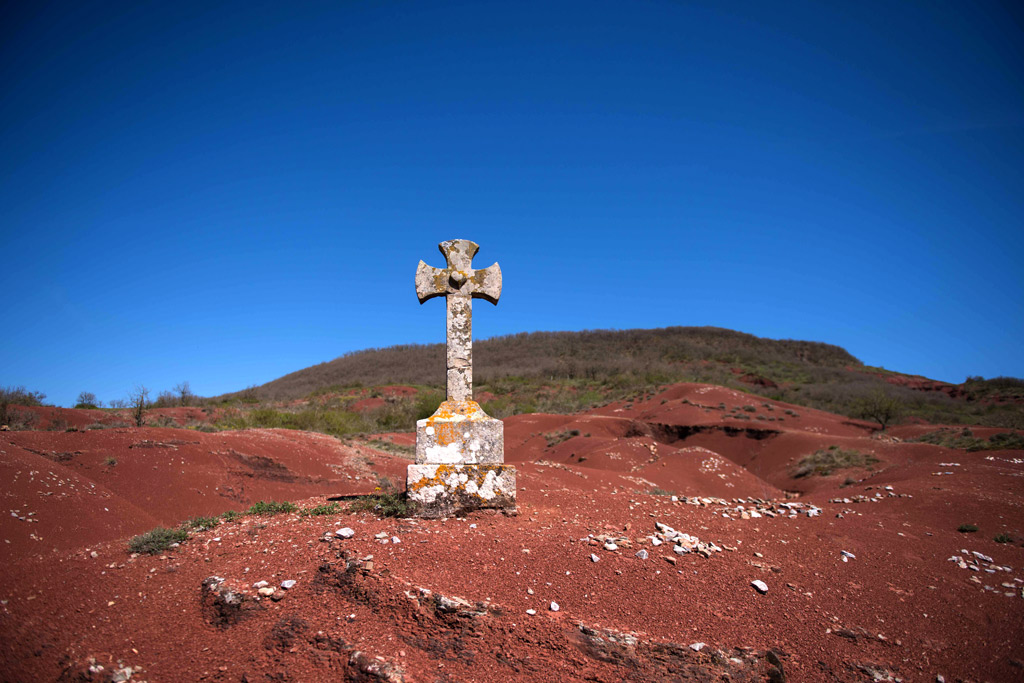

THE COUVERTOIRADE
The very pretty village of La Couvertoirade, on the list of the most beautiful villages in France, is set in the middle of the nature of the surrounding Larzac, peaceful and indomitable. Remarkably preserved, La Couvertoirade is like a dream village, for those who wish to immerse themselves in the legends of the Knights Templar, Hospitallers and in the history of the 16th and 17th centuries.
The fortifications of La Couvertoirade shelter a truly exceptional heritage: practically all the houses are made of traditional stone, in sumptuous little streets that run in a maze. We lose ourselves happily, to discover surprises and real treasures at every corner, starting with the ramparts: enter the village by one of its monumental entrance gates and their battlements, they were built by the Hospitallers to watch the surroundings and protect the villagers. The Knights Templar built a castle in the 12th century, which is private but open for visits in the summer. You stroll through private mansions and magnificent renovated buildings, such as the Scipone which houses an information center with a film on the village and an exhibition hall. The Saint-Christophe church and its stone interior, vaulted and very sober, which inspires serenity. Also discover the small presbytery. Pass between the alleys, to meet the lavognes, these paved holes which were set up by the breeders to water the animals, the water was collected by kinds of small canals in the city and just flowed into the lavogne... Do not miss to admire the Moulin de Redounel, at the top of the hill. It was recently restored.
There are many hikes to do around and from La Couvertoirade, it is a land of pilgrims that has always been known. For children and adventurers, there is an outdoor activity and caving center at La Couvertoirade: the Acro Roc des Infruts.
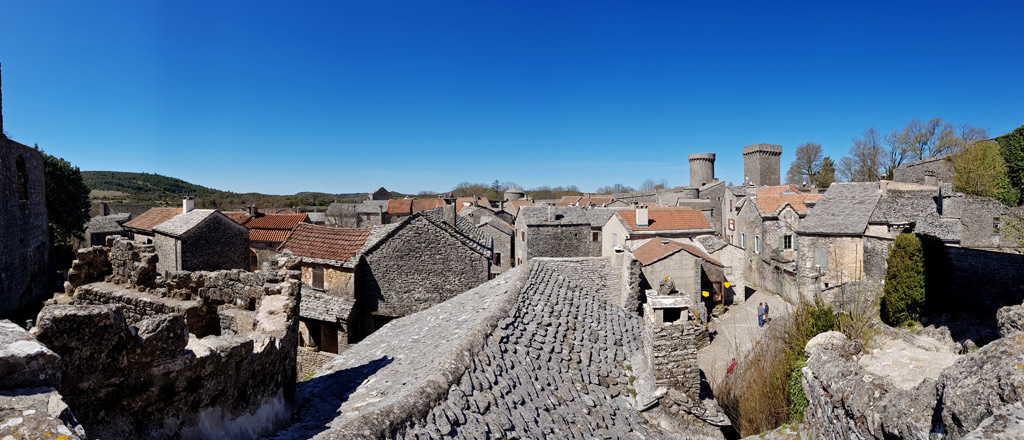
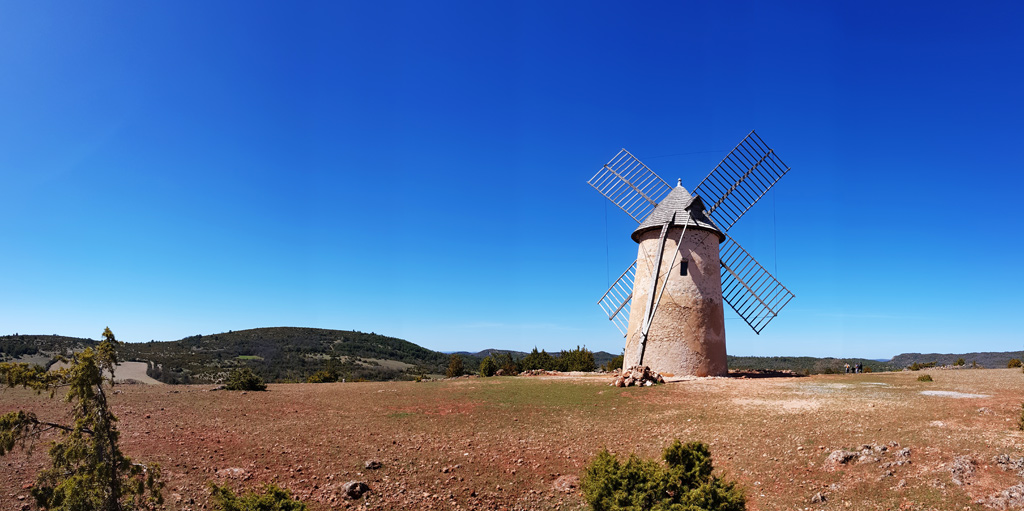
OUR CITY GUIDES IN EUROPE












